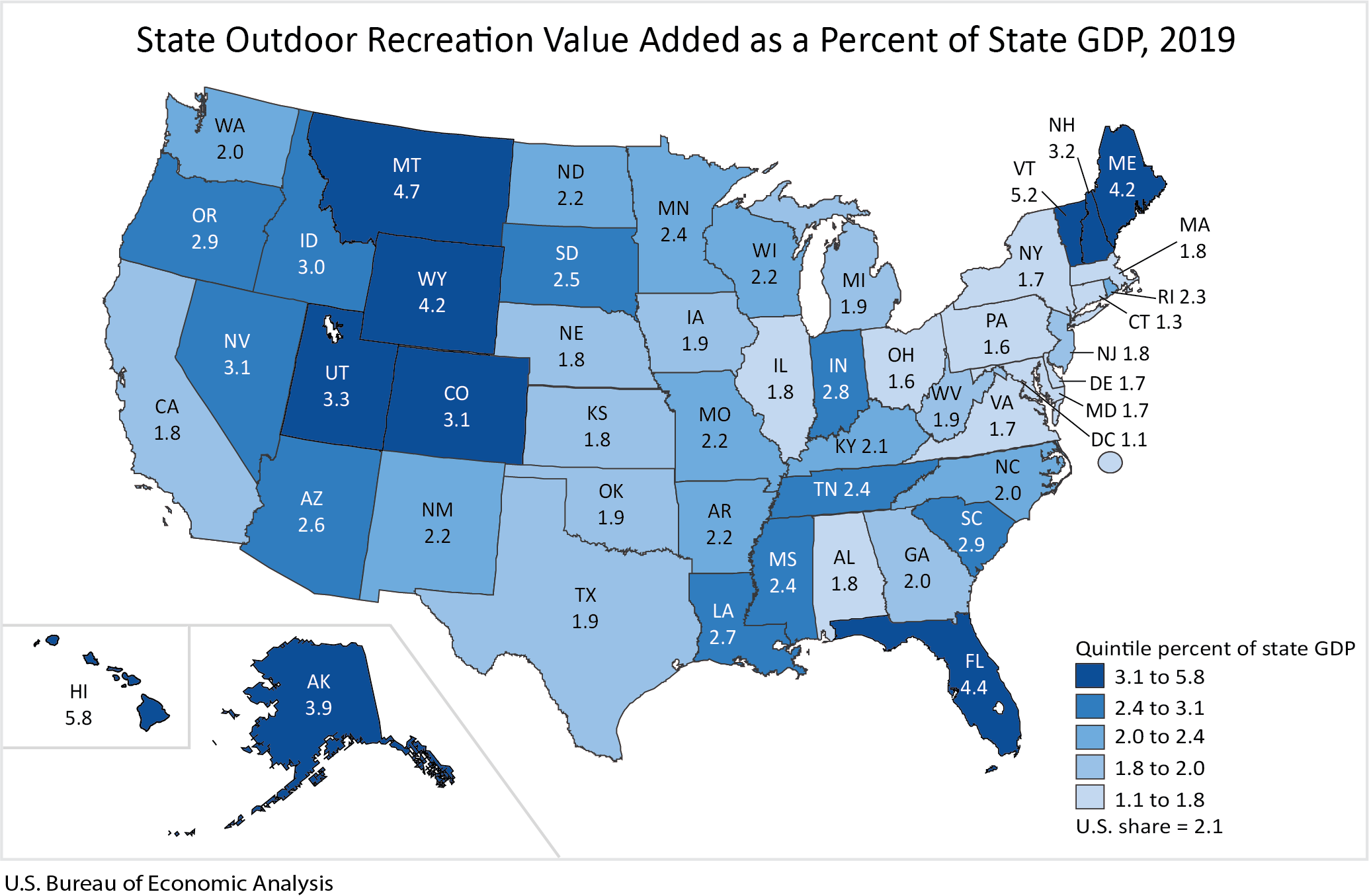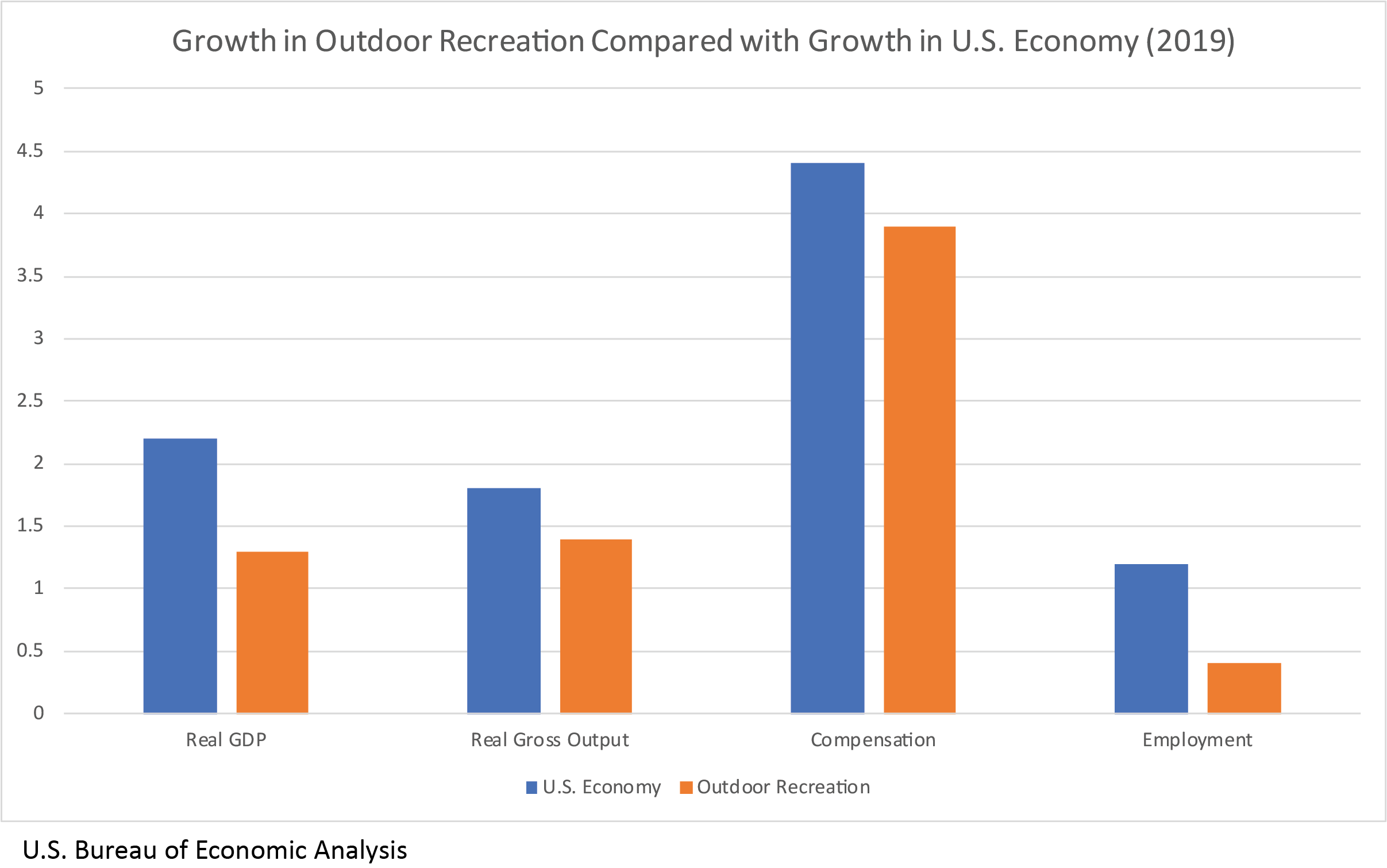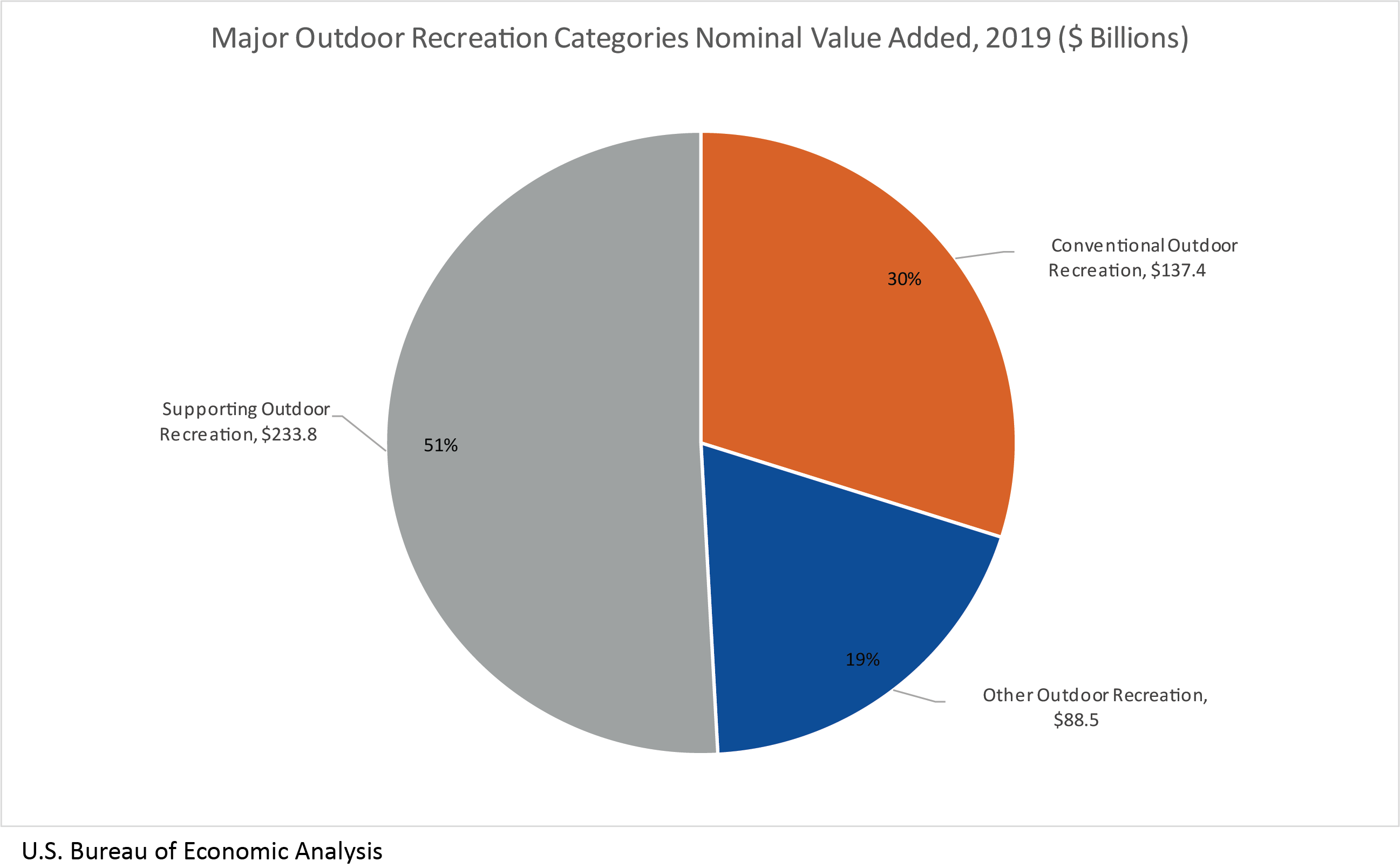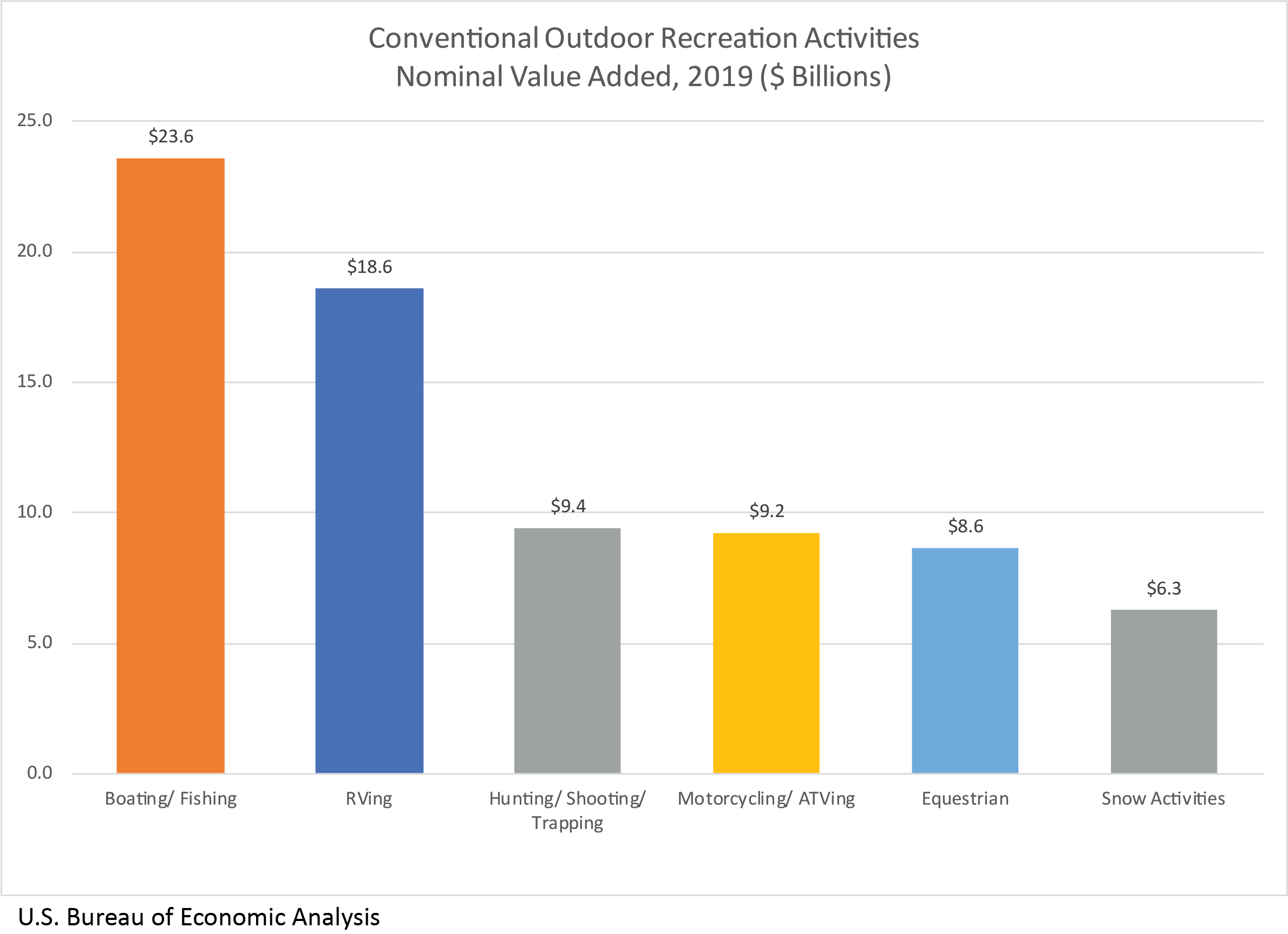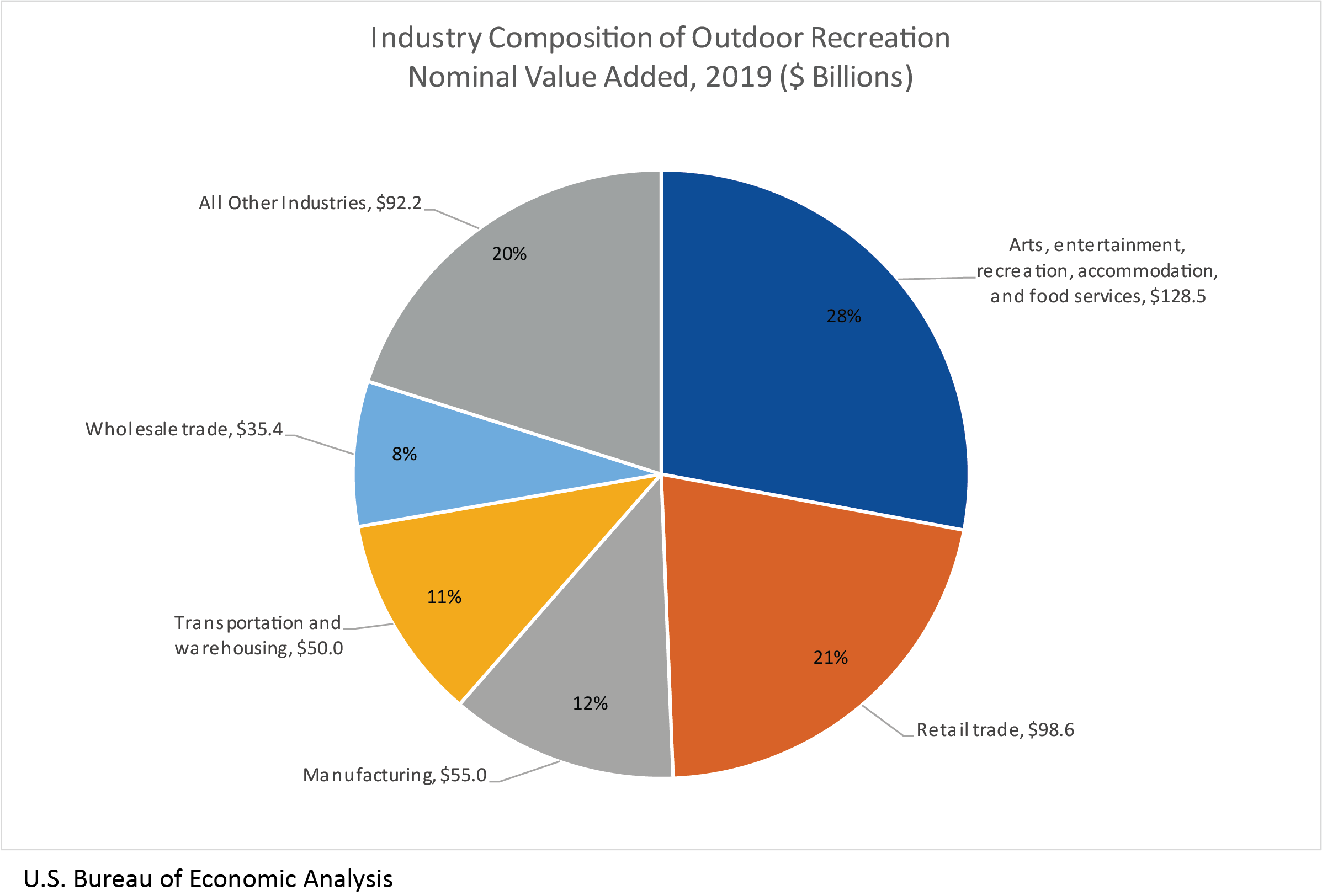News Release
Outdoor Recreation Satellite Account, U.S. and States, 2019
New statistics for 2018 and 2019; prior years updated
The Bureau of Economic Analysis released statistics today measuring the outdoor recreation economy for the nation, all 50 states, and the District of Columbia. The new U.S. data show that the outdoor recreation economy accounted for 2.1 percent ($459.8 billion) of current-dollar gross domestic product (GDP) for the nation in 2019 (national table 11). At the state level, outdoor recreation value added as a share of state GDP ranged from 5.8 percent in Hawaii to 1.3 percent in Connecticut. The share was 1.1 percent in the District of Columbia.
Inflation-adjusted (real) GDP for the outdoor recreation economy grew by 1.3 percent in 2019, compared with 2.2 percent growth of the overall U.S. economy. Real gross output for the outdoor recreation economy increased by 1.4 percent, while outdoor recreation compensation increased 3.9 percent and employment increased 0.4 percent.
Outdoor Recreation by Activity
Outdoor recreation activities fall into three general categories: conventional activities (including activities such as bicycling, boating, hiking, and hunting); other core activities (such as gardening and outdoor concerts); and supporting activities (such as construction, travel and tourism, local trips, and government expenditures).
In 2019, conventional outdoor recreation accounted for 30.0 percent of U.S. outdoor recreation value added, other outdoor recreation accounted for 19.0 percent, and supporting activities accounted for the remaining 51.0 percent.
Other value added by activity highlights for 2019 include:
- Boating/fishing was the largest conventional activity for the nation as a whole at $23.6 billion in current-dollar value added. This was the largest conventional activity in 30 states and the District of Columbia and the second largest activity in 11 states. Florida ($3.3 billion), California ($2.0 billion), and Texas ($1.7 billion) were the largest contributors to U.S. value added.
- RVing was the second largest conventional activity nationally at $18.6 billion in current-dollar value added. This was the largest conventional activity in 10 states and the second largest in 22 states and the District of Columbia. The largest contributors were Indiana ($3.4 billion) and Ohio ($646.3 million).
- Snow activities was the largest conventional activity in Colorado ($1.7 billion), Utah ($666.3 million), Vermont ($286.9 million), and Wyoming ($147.5 million) in current-dollar value added. At the national level, snow activities was the sixth largest conventional activity at $6.3 billion.
Outdoor Recreation by Industry
The outdoor recreation by industry data show the contribution of different industries to the outdoor recreation economy, including their impact on value added, gross output, employment, and compensation.
For the nation, the arts, entertainment, recreation, accommodation, and food services sector was the largest contributor to U.S. outdoor recreation value added in 2019, accounting for $128.5 billion (national table 10).
At the state level, this same sector was the largest contributor to outdoor recreation value added in 31 states and the District of Columbia. The leading contributors were Florida ($19.9 billion), California ($16.6 billion), and New York ($9.1 billion) (state table 3).
Other value added by industry highlights for 2019 include:
- Retail trade made the second largest sector contribution to outdoor recreation nationally, accounting for $98.6 billion in current-dollar value added. At the state level, retail trade was the largest contributor to outdoor recreation in 13 states and the second largest contributor in 32 states.
- Manufacturing, the third largest sector, contributed $55.0 billion nationally to the outdoor recreation economy. At the state level, this sector was the largest contributor to the outdoor recreation economy in Texas and Indiana.
Today, BEA also released updated outdoor recreation statistics at the national level on gross output, value added, employment, and compensation from 2014 to 2017. Revisions to these statistics primarily reflect the incorporation of the 2019 annual update of the Industry Economic Accounts released on September 30, 2020. Incorporation of results from the annual update allows the statistics to more accurately capture the dynamics of the outdoor recreation economy.
The state ORSA statistics were updated for 2012-2017. The revised statistics reflect the updated national data for 2014-2017 as well as newly available and revised regional source data.
Next release: November 2021
Outdoor Recreation Satellite Account, U.S. and States, 2020
